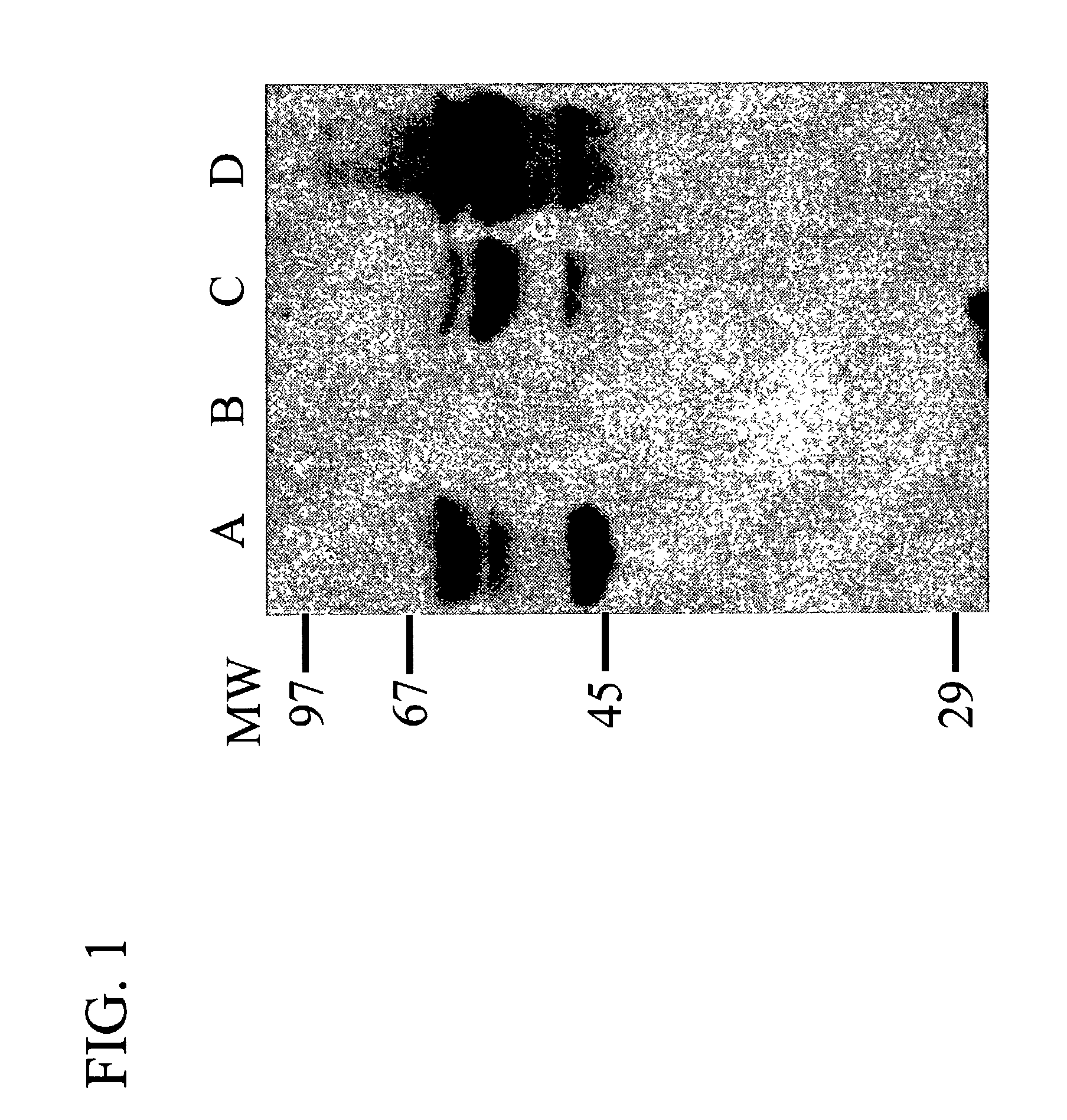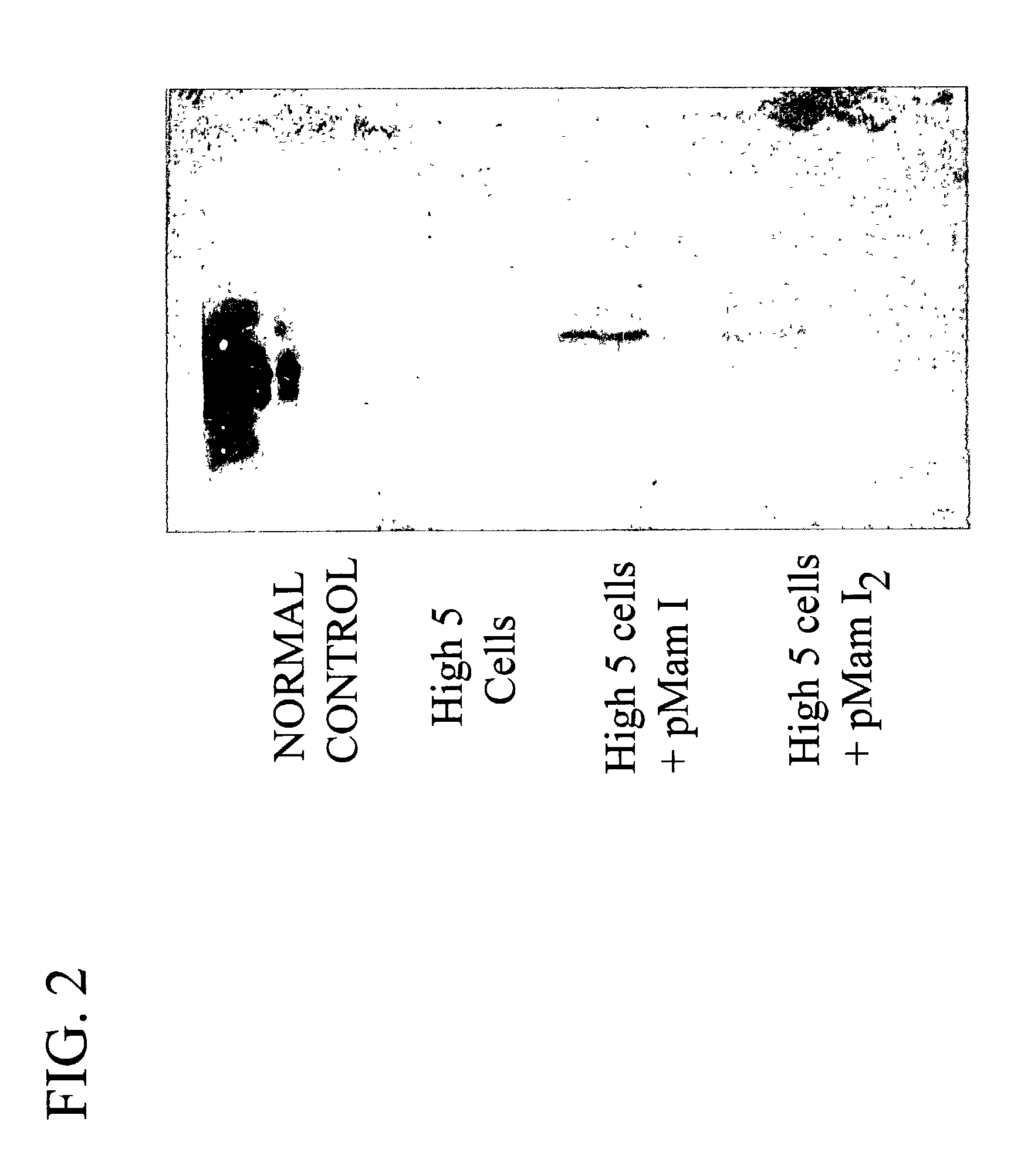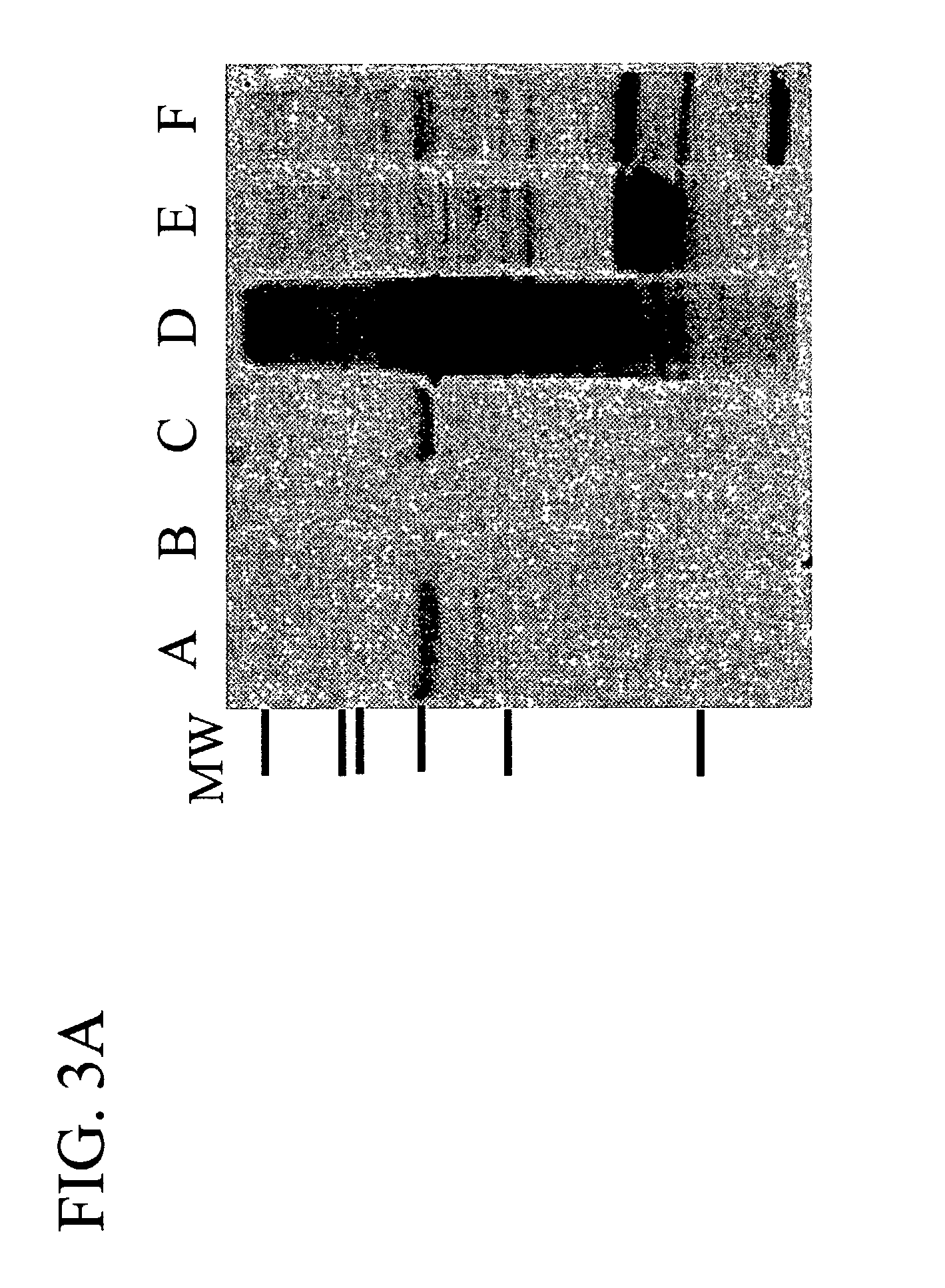Methods for treating breast cancer using a mammary cell growth inhibitor
a technology of growth inhibitors and breast cancer, which is applied in the direction of immunoglobulins, peptides, drugs against animals/humans, etc., can solve the problems of inability to determine, inability to find a suitable method of treatment or prevention, and current therapies available for the treatment of breast cancer, so as to prevent the growth of breast cancer cells
- Summary
- Abstract
- Description
- Claims
- Application Information
AI Technical Summary
Benefits of technology
Problems solved by technology
Method used
Image
Examples
example 1
Human Mammary Cell cDNA Library
[0075]A cDNA library was prepared from human mammary cells obtained from reduction mammoplasties (UM Hospital). Total RNA was isolated from the mammary cells by cesium chloride gradient. From the total RNA preparation, mRNA was isolated. The methods used were those described in Garner I., “Isolation of total and poly A+ RNA from animal cells”, Methods Mol. Biol. (1994) 28:41-7.
[0076]Reverse transcriptase in the presence of the isolated mRNA produced cDNA that was then ligated to EcoRI linkers. The cDNA was inserted into EcoRI cut T4 DNA ligase-treated Lambda Zap, and amplified in XL1-blue E coli, following the method described in Short J M., et al. (1988) Nucleic Acids Research 16: 7583.
example 2
Preparation of Mammastatin Oligonucleotides
[0077]The normal human mammary cell cDNA library prepared in Example 1 was screened for the presence of nucleic acids encoding Mammastatin using degenerate oligonucleotides. The degenerate oligonucleotides were derived as follows:
[0078]Normal human mammary cells were obtained from the Plastic Surgery Department of the University of Michigan Hospital or from the Cooperative Human Tissue Network. The tissue was reduced by collagenase treatment generally following the procedure described in Soule, et al., In Vitro, 22:6 (1986).
[0079]Mammary cells were grown to confluence in 175 cm2 flasks in DMEM / F12 low calcium media formulated with 40 μM CaCl2 and supplemented with 5% CHELEX treated equine serum (Sigma), 0.1 μg / ml cholera toxin (Sigma), 0.5 μg / ml hydrocortisone (Sigma), 10 ng / ml epidermal growth factor (EGF, Collaborative Research, Bedford Mass.), 10 μg / ml insulin, and 1 μg / ml penicillin / streptomycin following the method described in Soule, ...
example 3
Screening Mammary Cell CDNA Library with Degenerate Oligonucleotides
[0094]Bacteria infected with phage prepared for Example 1, containing a normal mammary cell cDNA insert, were plated on 15 cm NZCYM (10 g, NZ amine (Bohringer Manheim), 5 g NaCl, 5 g yeast extract, 2 g MgSO4, 1 g casamino acids) plates in top agar ( 1 / 10 dilution of infected bacterial cultures to 6 ml of 7% NZYM top agar) and allowed to incubate eight hours at 37° C. Plates containing plaques were overlaid with nitrocellulose for 15 minutes before denaturation of phage. Phage was denatured by blotting filters (DNA side up) on Whatman paper saturated with 0.5 M NaOH, 1.5 M NaCl for 5 minutes. Filters were rinsed with H2O before incubating for 5 minutes in 1 M TRIS pH 7.0, 1.5 M NaCl followed by 20× SSC and 2× SSC, each for 5 minutes. Filters were dried and baked for 1 hour at 80° C. or placed under ultraviolet light to immobilize DNA. Baked filters were washed for 30 minutes in 2× SSC with 1% SDS and then prehybridiz...
PUM
| Property | Measurement | Unit |
|---|---|---|
| Time | aaaaa | aaaaa |
| Concentration | aaaaa | aaaaa |
| Concentration | aaaaa | aaaaa |
Abstract
Description
Claims
Application Information
 Login to View More
Login to View More - R&D
- Intellectual Property
- Life Sciences
- Materials
- Tech Scout
- Unparalleled Data Quality
- Higher Quality Content
- 60% Fewer Hallucinations
Browse by: Latest US Patents, China's latest patents, Technical Efficacy Thesaurus, Application Domain, Technology Topic, Popular Technical Reports.
© 2025 PatSnap. All rights reserved.Legal|Privacy policy|Modern Slavery Act Transparency Statement|Sitemap|About US| Contact US: help@patsnap.com



